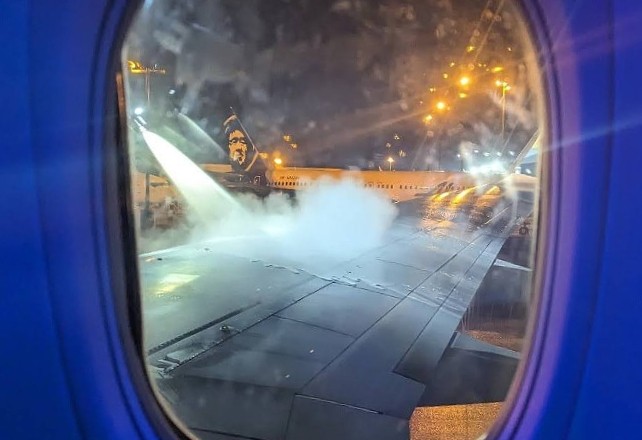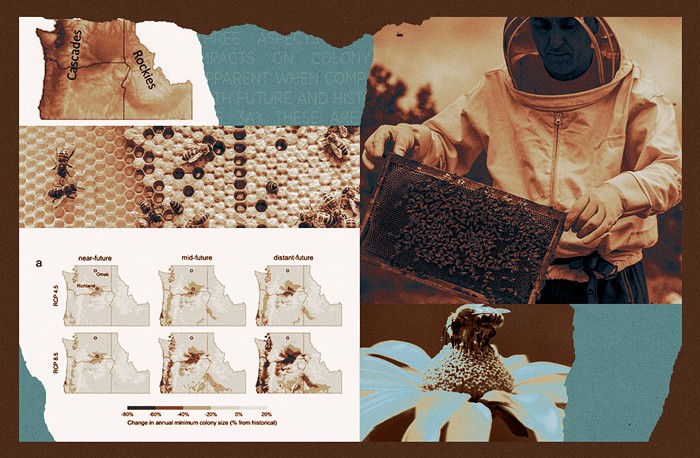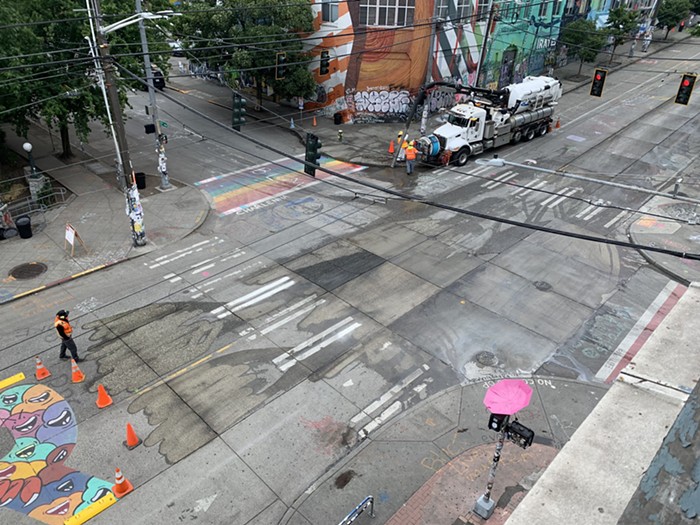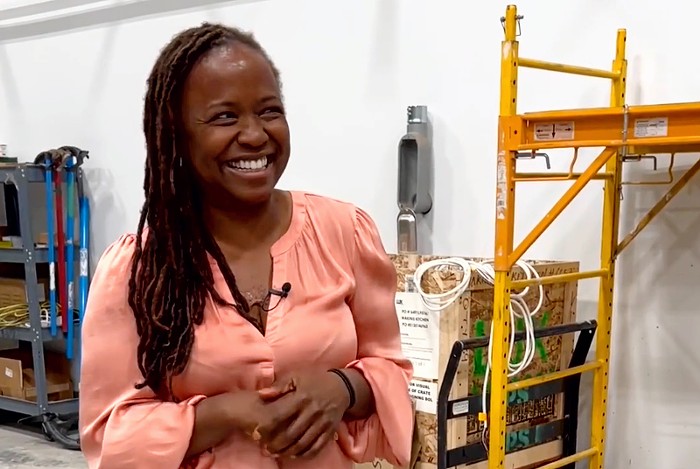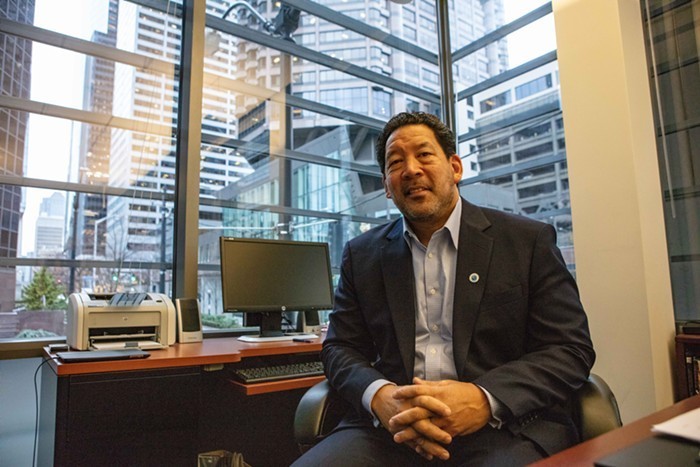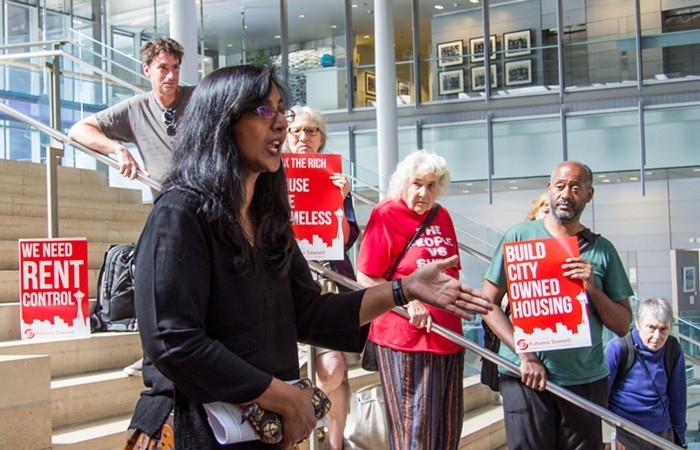
Hilary Franz hates to be the bearer of bad news, but … “this year is positioning itself to be the worst wildfire season in Washington state’s history,” says our Director of Natural Resources. “Firefighters who’ve been doing this work in Washington for over thirty years have said ‘we haven’t seen conditions like this ever.’”
So far, Washington’s battled about 1,700 fires — nearly as many as we faced in all of 2018, and 2021’s fire season is only halfway done. If the warning that this is Washington’s “worst wildfire season” yet sounds familiar, that’s because the same was true last year, and for several years before that. Since 2016, the number of wildfires in Washington has trended higher every single year.
That means that unless we can get ahead of steadily worsening conditions, we’ll see more smoke in the air, more towns wiped off the map, and more loss of life.
But the DNR has a plan.
Technically, the Department of Natural Resources has many different areas of focus — lakes and rivers, geology, wild animal conservation, land leases, and so on — but after Washingtonians elected Franz as Commissioner in 2016, she identified wildfires as a threat to every aspect of the state’s natural areas. Under her leadership, the DNR has functioned as a sort of firefighting command center for the Pacific Northwest, first tackling the most urgent fire threats before now preparing to turn increasingly to prevention.
For 2021, Franz said, the department was able to predict early in the year that dry conditions would set the stage for catastrophic fires, and they mobilized to have resources in place ahead of time. “We knew that many states, and not just California and Washington and Oregon, would be rushing for more air resources and firefighters, and we’d all be competing for those resources when it got tough,” she says. “And that’s largely played out.”
Among the extra resources now at work in Washington, thanks to early planning: aircraft, federal firefighters, heavy equipment like bulldozers, camp logistics managers, and crews from other states. But with Washington burning at a faster rate than ever before, those teams are feeling an intense strain.
“They’re exhausted and tired because they’ve had little break,” Franz says — and at this point, with fires raging across the west, there simply aren’t any backup crews that the state can bring in for relief.
COVID has imposed an additional burden: It’s harder to bring in international teams now, as has happened in past years, and each case of COVID requires that multiple members of a crew be quarantined. The DNR requires that its firefighters be vaccinated by October 18, but they’re unable to impose a similar mandate for federal firefighters or crews from out of state.
What’s more, it’s proven difficult for workers in remote locations to access vaccines. “These camps are not necessarily near your local pharmacy,” Franz says. They’re planning to deliver vaccinations to the camps in coming weeks.
So is this just what life in Washington is like now? Should we just get used to it? No, Franz says, it doesn’t have to be this way. We can enlist a powerful ally to stop the fires from getting worse: Washington’s forests.
A century ago, Washington forests were far more fire-resilient. But warmer, drier temperatures have left them vulnerable: There’s more dead debris, so fires burn hotter; and trees are less healthy, so they can’t withstand fires like they used to.
“If you went back 100-plus years and you walked the forests of the Cascades,” Franz says, “you would not see the dense forests you see today. Fire would have come through there naturally, it would have removed dead, dying, diseased [trees], and created more space between trees so they didn’t have to compete so much for soil nutrients, sunlight, water.”
Small, natural fires used to remove fuel before bigger fires could take hold; and more plentiful water kept the bigger trees strong enough to withstand minor blazes. But now, Franz says, “these forests are struggling because there isn’t enough moisture to keep them healthy… it’s burning faster than paper.”
That’s no exaggeration — paper has, on average, a moisture content of about 5%. Franz says that an assessment of some Washington forests found moisture content at 2%.
So what’s to be done? Rather than just fighting fires after they start, the DNR has put together a plan to send forest management teams through over a million acres over the next 20 years, restoring areas and setting carefully prescribed burns to remove excess fuel. That work has already begun, but Franz says, “it’s not fast enough.” She wants to see it completed in ten years instead of twenty. Delaying forest management, she says, is like delaying treatment for a manageable disease. If we can get ahead of the flames, the forests can eventually return to their natural state of withstanding fires with less human help.
That aligns with what scientists have been saying: “There have been major changes as a result of taking fire out of these landscapes and major benefits from intentionally putting fire back in,” said Susan Prichard, a fire ecologist with the UW’s School of Environmental and Forest Sciences in an interview with Andrew Engelson earlier this month. Prichard pointed to Indigenous forest management techniques, including controlled burns, as a way to maintain the health of the landscape.
But one obstacle to that approach is the U.S. Forest Service, which stopped all prescribed burns this year so that crews could focus on extinguishing the larger fires.
Forest Service Chief Randy Moore explained that "we are in a 'triage mode' where our primary focus must be on fires that threaten communities and infrastructure. … When western fire activity abates, we will resume using all the tools in our toolbox."
But that’s assuming that major fires will, indeed, abate, rather than steadily worsen as they have for the last five years. Researchers, along with state leaders like Franz, are calling for a more forward-looking approach, rather than focusing only on existing fires.
“If we work fast, and I mean truly fast,” Franz says, “we can get the work done on the ground and restore the health of our forest so our forests can naturally defend themselves against fires.”
That will require a continued investment in forestry, like HB 1168 — a bill approved this year that dedicates $125 million every two years to assessing and mitigating fire threats. It’s a good start; but we’ll likely need to do more, particularly on federal lands and on the west side of the state, where the impact of wildfire smoke has been steadily worsening.
And citizens will need to take action as well, Franz says — ninety percent of Washington fires are caused by humans, from sources like campfires, chains dragging from trucks, and parking on dry grass. To survive the next decade of fires will require not just an investment of money and resources, but also that you knock it the fuck off with your carelessness. Jesus.

